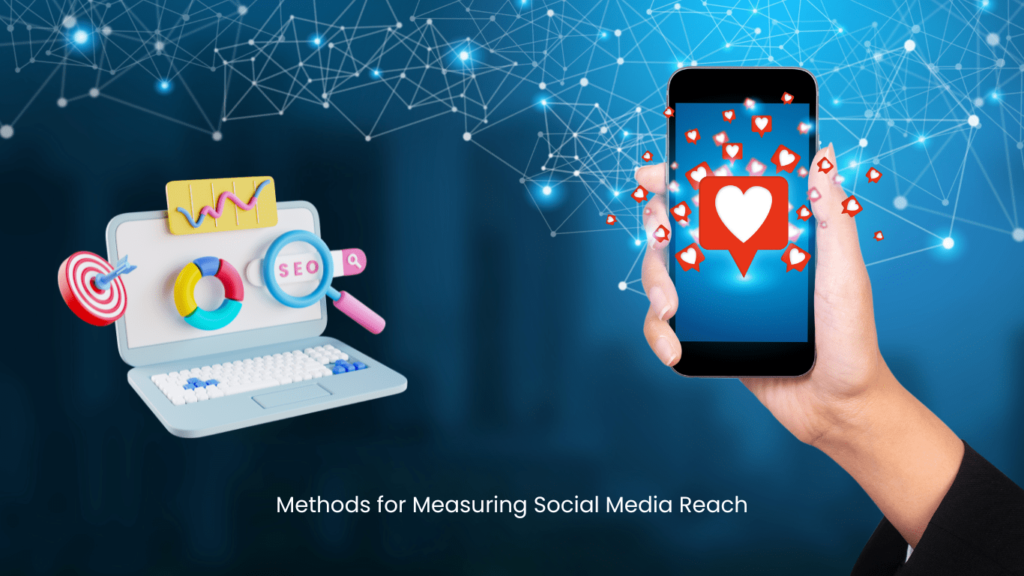Social media platforms like Facebook, Instagram, and Twitter provide access to billions of users worldwide. For businesses, reaching this massive potential audience through social media marketing is a valuable opportunity to drive brand awareness, engagement, and sales.
But in order to optimize social media investments, marketers need accurate metrics to track performance. One of the most important indicators is social media reach - the number of unique users who see your content.
This guide will explore how to measure reach across platforms, analyze performance, benchmark against competitors, and ultimately enhance social media reach to fuel business growth.
Defining Social Media Reach

➤ What is Social Media Reach?
Social media reach refers to the total number of distinct social media users who have viewed, engaged with, or been exposed to any branded content across platforms.
For example, if a Facebook post by XYZ Company reaches 300 users, this means 300 unique users saw that post in their feed. Reach metrics are critical for gauging real audience size and campaign exposure.
➤ Key Differences from Impressions
Reach differs from a similar metric of social media impressions - the total tally of content views, excluding unique users. A post with 100 impressions may have been viewed only 10 times each by 10 people. The impression count alone doesn't indicate the total number of people reached.
➤ Types of Reach
Organic reach tracks unpaid content views generated via social platforms' algorithms and user sharing. Paid reach counts views of promoted content like sponsored posts, social ads, and boosted or suggested posts.
➤ Why Measure Reach?
Reach metrics indicate how successfully brands are exposing content to new potential customers and driving growth. Comparing reach over time shows whether audiences are expanding. Analyzing which content garners highest reach also informs content strategy.
Methods for Measuring Social Media Reach

➤ Social Media Analytics Tools
Dedicated social media analytics tools provide the most powerful reach monitoring and reporting. Top platforms like Sprout Social, Hootsuite, and Rival IQ integrate with social networks' APIs to import reach data into consolidated dashboards.
These tools present reach performance visually, allow filtering by factors like platform and post type, and enable exporting custom reports. This facilitates detailed analysis beyond native analytics.
➤ Native Analytics
Social platforms themselves also report post reach via built-in analytics tools like Facebook Insights, Instagram Insights, and Twitter Analytics. However, these native tools don't compare historical performance or integrate cross-platform data.
➤ Calculating Engagement Rate
(Reactions or comments) ÷ (Reach) = Engagement Rate
This formula contextualizes reach relative to engagement and indicates content quality. Higher rates signify greater user interest and shareability.
How to Interpret Reach Data
➤ Evaluating Against Benchmarks
Don't assess reach solely by absolute numbers. Compare reach to follower count and establish benchmarks to gauge effectiveness. The average Facebook organic reach is under 6% of followers. Top Instagram pages see just 2-3%.
➤ Analyzing Trends and Patterns
Views fluctuate post to post. Examine reach over longer periods to identify broader trends and draw insights about strongest-performing content types, platforms, and tactics.
➤ Tying Reach to Conversions
Correlating reach to website traffic and conversions helps calculate social media ROI and optimize budgets. Does greater reach drive more visits and sales? When reach declined, what happened to site traffic?
➤ Goal Setting
Set realistic reach goals based on past performance and growth trajectories. Incremental increases help maintain momentum while being achievable.
Strategies for Improving Social Media Reach

➤ Creating Compelling, Optimized Content
Post types and topics tailored for each platform see greater engagement. Instagram favors bright visuals and simple captions while Facebook users prefer longer text and discussion.
➤ Social Media Algorithm Optimization
Understand how algorithms rank content on each platform, then craft content to score highly on relevance factors. Having users engage right away boosts visibility.
➤ Engaging Followers
Reply to comments, like posts, and ask questions to spark community interaction. This signals quality content to algorithms and keeps users engaged.
➤ Leveraging Influencers
Influencer partnerships tap into established personalities' existing reach. Even micro-influencers with niche audiences can generate impressions and clicks.
➤ Paid Social Advertising
Ads offer guaranteed reach to new audiences beyond followers. Run multiple campaigns to identify most efficient sources of paid reach by platform, audience, and post type.
➤ Strategic Use of Hashtags
Hashtags expand visibility to users following associated tags. Prioritize 1-2 topically relevant hashtags to avoid overwhelming captions.
➤ Driving Shares
Add share buttons and encourage user-generated content for more organic visibility as followers share posts.
Read also: What Is Social Media Engagement?
Answering Key Social Media Reach Questions
How is reach different than impressions?
Reach shows unique users while impressions count total views including repeat views. Reach identifies genuine audience scope.
What factors influence reach?
Main factors increasing reach include follower count, engaging content, influencer partnerships, paid promotion, hashtag use, and encouraging shares.
How can I track reach across platforms?
Use third-party analytics tools like Sprout Social to integrate data from all social platforms into unified reach reports and dashboards.
What are realistic reach goals?
Organic Facebook reach around 6% of followers is average, 2-3% on Instagram. Review past performance and set incremental reach increases.
How else can I increase reach besides ads?
Creating quality, optimized content, engaging your community, partnering with relevant influencers, and driving user sharing all boost organic reach.
Conclusion and Next Steps
Measuring reach is crucial for gauging social media performance and guiding strategy refinement. By monitoring reach over time, analyzing trends, and learning from top-performing content, brands can maximize audience size and awareness.
This guide outlined best practices for tracking reach across social platforms using native and third-party analytics tools. Interpreting reach data in the context of benchmarks, business goals, and broader performance identifies opportunities for improvement.
Follow the strategies outlined to incrementally expand organic and paid social media reach. Consistently increase exposure among relevant social users to drive real business results powered by data-driven social media marketing.


